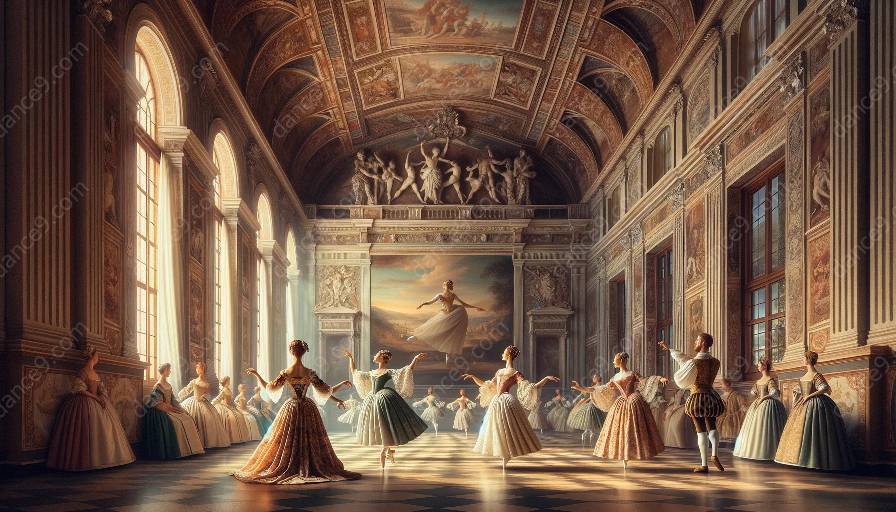Ballet, a classical dance form with a rich history, has undergone significant development and transformation through the integration into academic institutions and curricula. This integration has played a crucial role in shaping the art form, influencing its pedagogy, and contributing to its continuing evolution.
Origins of Ballet
The origins of ballet can be traced back to the Italian Renaissance courts in the 15th century, where it was initially a form of entertainment and expression for the nobility. The early roots of ballet are intertwined with the development of courtly etiquette, music, and costume, and as a result, ballet has historically represented a blend of music, poetry, and dance in a performance setting.
Ballet History and Theory
Through the Renaissance and into the 17th century, ballet further evolved under the influence of French and Italian court cultures. It gradually transformed from a form of court entertainment into a professional art form with defined techniques and styles. In the 19th century, ballet underwent a revolutionary change with the establishment of the Imperial Theatres in St. Petersburg and the birth of classical ballet as we know it today. This period also saw the emergence of renowned ballet masters and choreographers who shaped the technical and artistic foundations of ballet.
The Integration of Ballet into Academic Institutions and Curricula
The integration of ballet into academic institutions and curricula has played a pivotal role in the development of ballet. As the demand for formalized dance education grew, institutions began incorporating ballet into their programs, thus legitimizing and standardizing its teachings. This integration marked a shift from ballet being solely a performance-based art form, to an academic discipline with a structured curriculum.
Academic institutions provided a platform for systematic training, theoretical study, and research in ballet. This academic approach not only contributed to the preservation and codification of ballet techniques and repertoire but also fostered a deeper understanding of its historical and cultural significance.
Influence on Ballet's Development
The integration of ballet into academic institutions and curricula significantly impacted the art form by fostering a new generation of ballet dancers, educators, and scholars. It enhanced the professionalism of ballet, leading to increased technical proficiency, artistic diversity, and a broader appreciation for the art form.
Furthermore, by being incorporated into academic curricula, the theoretical and historical aspects of ballet received greater emphasis, contributing to a more holistic approach to dance education. This, in turn, led to the exploration of new choreographic styles, innovative interpretations of traditional repertoire, and a greater awareness of ballet's cultural relevance.
Evolution of Ballet Pedagogy
The integration of ballet into educational institutions also brought about changes in pedagogical methods and training techniques. It led to the establishment of standardized syllabi, teaching methodologies, and certification programs, ensuring a consistent approach to ballet education across different institutions.
Through academic integration, ballet pedagogy evolved to embrace a more comprehensive understanding of human anatomy, physiology, and psychology, resulting in a more informed and holistic approach to training dancers. This scientific and educational approach elevated the standards of ballet training and emphasized the importance of injury prevention, physical conditioning, and the overall well-being of dancers.
Conclusion
The integration of ballet into academic institutions and curricula has undeniably played a pivotal role in shaping the development of this classical dance form. By providing a structured framework for education, training, and research, academic institutions have contributed to the evolution and refinement of ballet, ensuring its continuity as a respected art form and cultural tradition.





























